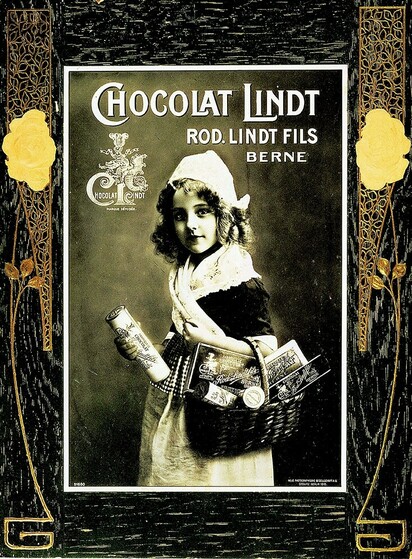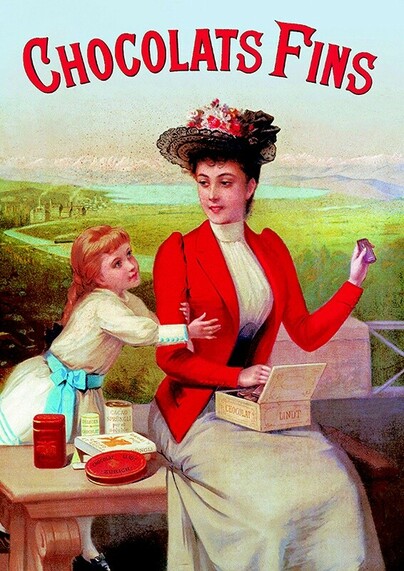1/ Here is a thread about #chocolate, #innovation and a bit of luck.
The year is 1879. It may be hard to believe but chocolate at this time is just not very good. It's bitter. It's crumbly. It does not melt like today's chocolate, but falls apart into tiny pieces with consistency of grains of sand.
And yet, making chocolate was good business and Switzerland already had an established industry.
2/ At this point, a young Rodolphe Lindt opened a chocolate factory in #Bern. Mr. Lindt came from a wealthy family, and by all accounts he was not interested in running a business and did not know much about chocolate production.
Even by 1879 standards his chocolate was subpar. #Lindt chocolate bars would quickly develop a white layer – known as chocolate bloom – that looked like mold. This made selling his chocolate almost impossible. Mr. Lindt asked his father, a pharmacist, for advice.
3/ The father, who had been mixing medicines for decades, quickly identified the problem – cocoa fat was not sufficiently mixing with the other ingredients and the solution was to mix the ingredients for a bit longer.
It is difficult to know what happened next, but one version is that on a Friday afternoon, Mr. Lindt forgot to turn off the large mixer that was mixing the cocoa powder, cocoa fat, sugar and powdered milk together.
4/ When he came back to the factory on Monday morning, the mixer was still running, but in it was #chocolate unlike anything the world had seen before. It was rich and creamy and delicious. The modern #fondant chocolate was discovered.
The results were spectacular. Everybody wanted a piece of #Lindt chocolate. For full twenty years, competition tried, and failed, to learn the secret behind Lindt's creamy, delicious goodness.
5/ The secret was beyond simple – just mix the stuff for a bit longer – and yet Lindt manage to profit handsomely from his #innovation without any formal legal protection. It is worth remembering that sometimes #patents are not necessary.
To minimize his administrative duties, Lindt outsourced distribution and sales to Mr. Jean #Tobler. If you like chocolate, that name should ring a bell too. Mr. Tobler set around selling Lindt's chocolate, and the demand seemed endless.
6/ Lindt, having no interest in building additional factories, decided to solve the excess demand problem by – raising prices. This worked for a while, until Tobler decided to started his own company – which would eventually produce the famous #Toblerone chocolate.
Having lost the services of Mr. Tobler, Rodolphe Lindt decided to sell his business and the secret to his creamy chocolate. In 1899, Lindt was sold to a Zurich chocolate maker #Sprüngli, forming Lindt & Sprüngli.
7/ Lindt & Sprüngli still exists and they still make excellent chocolate, right on the shores of Lake Zurich.
Source is a wonderful book "Patriarchen" by Alex Capus. This is an adaptation of a thread of mine from the blue bird site.
/end
@IgorLetina this chocoholic thanks you profusely!!!
@msiniscalchi @IgorLetina and this chocolate lover joins in the thanks!


